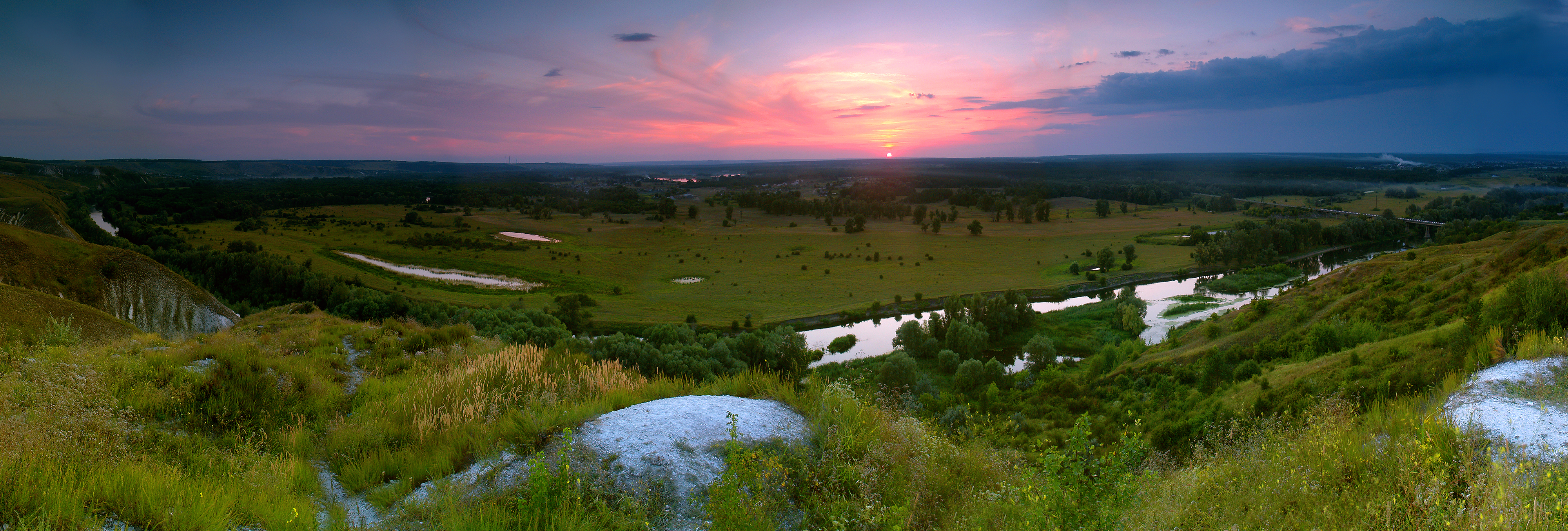When you’re drawing lines on a map, it can be very easy to see them as very neat divisions: You’ve got the elves over here and then the nagas over there. The sun-worshiping samurai are in this bit, with the Daejongist Empire tucked away on this peninsula. And the Goryō Kingdoms take up this big chunk to the north. If you’re in the kingdom of Taiyō, then you’re going to see a bunch of melanin castes. But if you’re over in the Daejongist Empire, you’ll have a bunch of shaman lords running around.
And nary the streams shall cross.
In the real world, of course, cultures blend at the borders and draw together into the melting pots. So the first thing you can do, if you’re near the border in your campaign world, is to reach across it and selectively draw in elements from over there. For example, in In the Shadow of the Spire, the city-state where the campaign takes place is located in Arathia (whose architecture is primarily Greco-Roman in influence), but it’s very near the border with the Vennoc Protectorates. Which is why you’ll see the faintly gothic architecture of the Vennocan style creeping into my descriptions of the city.
You can take this technique to the next level by thinking about how both cultures are shifted as a result of this cultural exchange: It’s not just that there are death shamans near the border of the Goryō Kingdoms, it’s that many of the ghosts in this region have learned to murder the animistic spirits and take their place like spiritual doppelgangers.
But the cultural penumbra of a people or nation is often more significant than that. Consider, for example, the region of Brittany in northern France. It’s called Brittany because in the 4th century people from Britain crossed the channel and created a colony. In the 5th and 6th century, this immigration by the British exploded as a result of the Anglo-Saxon invasion of Britain.
Or look at Franconia, a region of Germany so-named because it was conquered by the Franks (the same Franks from whom France takes its name). Although the Frankish dominion of the region has been swept away by countless invasions and regime changes, that historical legacy nevertheless endures.
These vestigial or tributary realms not infrequently outlast their motherland, leaving them as a living tribute to a lost history.
There are a couple of ways that you can build this kind of dynamic cultural legacy into your campaign world.
First, you can meticulously plot out the entire history of your world, tracking invasions and cultural migrations and regime changes in the detail necessary to know that, for example, the Bakunawan serpent clans swept down the seven valleys of the Nauteka river delta, drove the Bathalan people to the west (where they warred with the proto-Daejongist civilization), and claimed the so-called lunar cities for themselves, only for those cities to become isolated when the Shwe Nabayan empresses seized the Celestial Throne and began a purge of the Bakunawans. Six of the  seven lunar cities were destroyed during the Shadow Wars, and then all these lands were claimed by the kingdom of Taiyō as the wars came to an end. The province of Bakunawa remains, with the old city of Maiphai as its capital, its rocks riddled with the infamous wyrm-caverns, and its samurai favoring serpent-hilted swords.
seven lunar cities were destroyed during the Shadow Wars, and then all these lands were claimed by the kingdom of Taiyō as the wars came to an end. The province of Bakunawa remains, with the old city of Maiphai as its capital, its rocks riddled with the infamous wyrm-caverns, and its samurai favoring serpent-hilted swords.
But working out your fictional history to that level of detail, while fun, also takes a lot of work and time.
Once you know that this sort of pattern exists in history, though, you can skip the laborious steps and jump straight to the effect.
For example, if you’ve got a big old kingdom full of elves (or maybe a region where there’s lots of ruins from the Old Elven Empire), then you can look across a channel or a river or maybe even just a couple hundred miles away in a semi-arbitrary direction and… Yup, there’s Alvland. Probably filled with an anomalously large population of half-elves. (Most people have at least a hint of a point on the tips of their ears.)
Once you’ve placed one of these vestigial realms, of course, you’ll probably want to fill in some of the details about why it exists. In the case of Alvland, for example, it turns out that about six hundred years ago one of the crystal citadel-cities of the elves abruptly vanished from the sky, reappeared a couple hundred miles away, and crashed. After the initial catastrophe, during which the local populace swarmed to their aid, many of the elves chose to remain in the area and settle down.
(Hmm… I didn’t even know the elves used to have flying cities made out of crystal. I wonder what happened to the rest of them?)













Didn’t know the elves had flying cities; yet all it took to establish them was a ‘word on a wire.’
Roll 1d6:
1 – They suffered a magical mishap that sucked them into the elemental plane of air. The inhabitants transmuted themselves to adapt to their new habitat; this is the origin of avariel.
2 – They were conquered by cloud giants. However, the giants lacked the know-how to maintain the spells that kept them aloft (elven magic being based on entirely different principles than their own) and were ultimately forced to park them on mountaintops. They now form the peaks of the Spikefinger Mountains.
3 – They’re still there, but they’re invisible now. Invisible sky elves are watching us constantly, ready to zap us with death rays if we grow too powerful!
4 – They traveled west across the ocean, never to return. Gnomish explorers in the newly-discovered continent of Avantia report that the indigenous lizardfolk have a legend of scaleless visitors from the sky who taught them the secrets of arcane magic. Due to their size, the gnomes were assumed to be the children of these sky people.
5 – They were attacked by githyanki, who hoped to used them as a beachhead for an invasion of the material plane. To prevent this from happening, the elves blew them up — all except one, which the githyanki managed to planeshift to safety and which is now the astral fortress of Ged’zahar.
6 – The first crystal citadel will be invented 80 years from now. The crystal is a focus for a powerful chronomantic ritual, allowing the entire city to be sent several thousand years into the past to escape an impending world-destryoing cataclysm. However, due to a flaw in the ritual, every time the city reached a certain point in time, the magic reactivated and sent it back to the original destination. This reset the timestream and created an increasing number of copies of the citadel (with different inhabitants each time, since several generations passed between resets). The crash of the eighth iteration was the result of a desperate attempt to break the loop (which it succeeded in doing, although not in the manner intended).
Whether the resetting of the timestream has averted the cataclysm is unknown. The general consensus (among those few elven scholars aware of the truth of the matter) is that it will still happen, because otherwise the citadel will not be created, and this would be a paradox.
Greetings from Franconia! 🙂
This came up in my last game. My players were walking from the celtic inspired Kingdom of Valon to the more Germanic ancient Dragon Empire.
They came to a town, and there asked “Are we still in Valon?” I shrugged. The players were a bit put out. “Where is the border?” “There is none, the realm extends as far as the influence of people who believe in it.” “So is this in the Empire or Valon?” “Good question!”